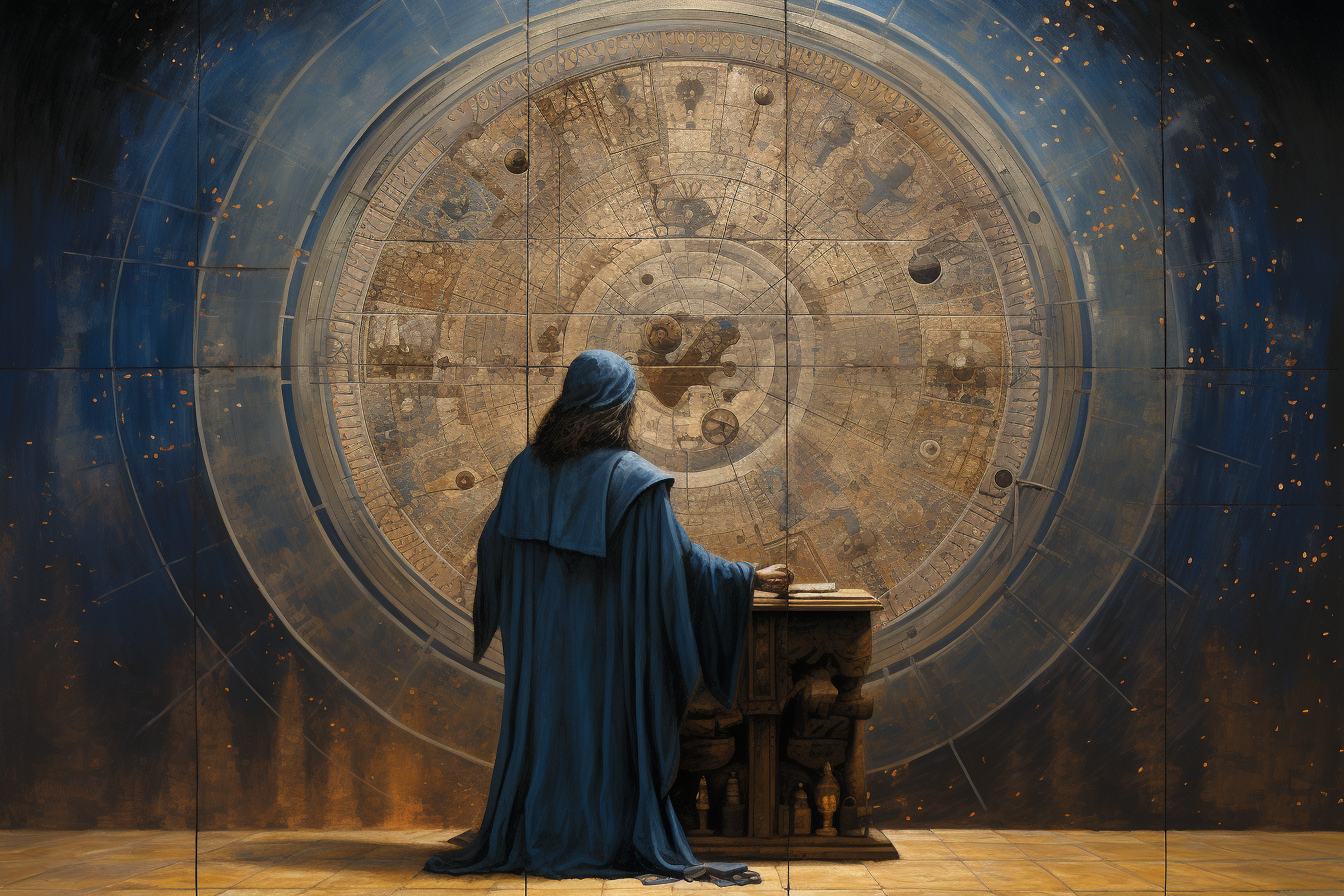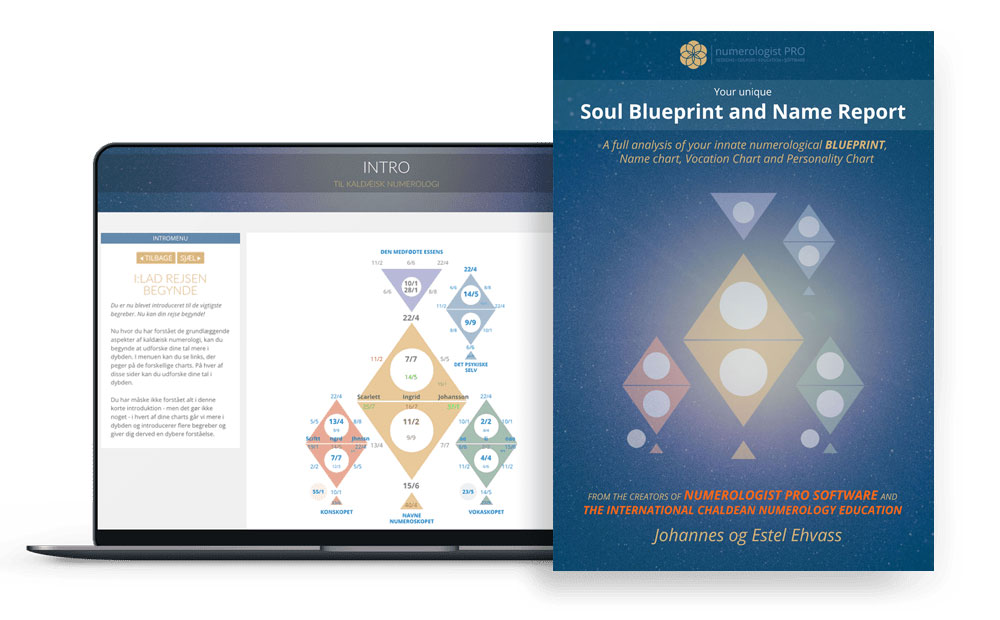Medieval Astrological Houses and the Synthesis of Traditions

Johannes Ehvass
Welcome, dear reader! Together, we embark on a captivating journey into astrology, a timeless art and science that has accompanied humanity since its earliest days. Each astrological discovery not only mirrors the era and culture it emerged from but also feels like a celestial gift, as if the universe is directly speaking to us. Through these articles, I share with you the profound journey of how astrology has grown and evolved alongside us. Let's explore this cosmic connection that has, for millennia, enriched our understanding of ourselves and the universe around us.

The Middle Ages, spanning roughly from the 5th to the late 15th century, were a pivotal era for the evolution of astrological thought in Europe.
As diverse civilizations and their intellectual treasures intermingled, astrology in the medieval period became a melting pot of traditions.
Central to this amalgamation was the system of astrological houses, a framework as ancient as astrology itself.
In this exploration, we will delve into the interpretations and significance of the 12 houses during the medieval period and understand how a synthesis of Hellenistic, Islamic, and indigenous European ideas brought about a richer, more nuanced understanding of the stars.
The Twelve Houses: An Overview
Rooted in ancient astrological traditions, the twelve houses represent various spheres of life, offering insights into everything from one’s personal identity to career and relationships.
The Angular Houses
1. First House (House of Self): Representing the self, physical appearance, and personal identity, this house was of paramount importance in medieval astrology, setting the tone for the entire chart.
2. Fourth House (House of Home and Family): Associated with one’s home, family, roots, and ancestry. It resonates deeply with emotional foundations.
3. Seventh House (House of Partnerships): This house governs partnerships, both romantic and business-related, revealing insights into the nature of one’s relationships.
4. Tenth House (House of Career and Public Life): Symbolizing one’s career, reputation, and public image, this house provides clues to a person’s role in the larger societal structure.
Succedent Houses
5. Second House (House of Possessions): Concerned with material assets, personal values, and financial matters.
6. Fifth House (House of Pleasure): Governing creativity, romance, pleasure, and children, offering a glimpse into one’s passions and joys.
7. Eighth House (House of Transformation): A realm of transformation, inheritance, and shared resources.
8. Eleventh House (House of Friendships): This house relates to friendships, aspirations, and larger community involvements.
Cadent Houses
9. Third House (House of Communication): Overseeing communication, short trips, and early education.
10. Sixth House (House of Service and Health): Concerned with health, daily routines, and acts of service.
11. Ninth House (House of Philosophy and Travel): A domain of higher learning, spirituality, and long journeys.
12. Twelfth House (House of Secrets and Sorrows): Representing the hidden, unconscious realms and places of confinement.
Synthesis of Hellenistic, Islamic, and Indigenous European Ideas
Medieval astrology did not develop in isolation. It was heavily influenced by a confluence of traditions that each brought unique perspectives and interpretations to the astrological houses and other aspects of the craft.
1. Hellenistic Influence
The foundation of European medieval astrology largely rested on Hellenistic principles. Works of great astrologers like Claudius Ptolemy were translated and studied extensively. The Hellenistic system emphasized the role of planets in the houses and introduced essential dignities, providing a robust framework that would be further built upon in the Middle Ages.
2. Islamic Contributions
During the early Middle Ages, as Europe grappled with the so-called “Dark Ages,” it was the Islamic world that became the beacon of intellectual activity. Islamic scholars not only preserved Hellenistic astrological texts but also enriched them with their insights. The idea of “terms” or “bounds” and the method of dividing houses are just a few examples of Islamic enhancements that found their way into medieval European astrological practices.
3. Indigenous European Thought
While Europe borrowed heavily from the Hellenistic and Islamic traditions, it also had its indigenous astrological practices that contributed to the synthesis. The Celtic and Germanic tribes, for instance, had their own astrological systems which, although less documented than the dominant traditions, played a role in shaping medieval European astrological thought.
A Fusion of Traditions
The true beauty of medieval astrology lies in its adaptability and inclusiveness. As various civilizations interacted through conquests, trade, and intellectual exchanges, their astrological systems merged and morphed. This synthesis led to a more comprehensive and nuanced understanding of the astrological houses and other elements, offering richer interpretations and predictions.
1. Hellenistic Influence
The Hellenistic period, which spans from the death of Alexander the Great in 323 BCE to the emergence of the Roman Empire, was a time of immense cultural exchange and synthesis, particularly in Egypt under the Ptolemaic dynasty. During this time, Greek knowledge mingled with Egyptian and Mesopotamian traditions, leading to significant developments in various fields, including astrology. The Hellenistic influence on medieval astrology is profound and multifaceted, and it can be seen in several core areas:
Astrological Framework and Philosophy
- Zodiac and Planetary System:
- The Hellenistic period solidified the use of the twelve-sign zodiac system and the seven traditional planets (Sun, Moon, Mercury, Venus, Mars, Jupiter, Saturn), which became standard in Western astrology.
- Aspects:
- The concept of planetary aspects (angular relationships between planets, such as conjunctions, squares, and trines) was formalized during the Hellenistic period. These aspects became a fundamental component of astrological analysis.
- Houses:
- The system of dividing the sky into twelve ‘houses’ for astrological purposes was also developed. Each house pertained to different areas of life, and planets within these houses were interpreted according to the areas of life they influenced.
- Essential Dignities:
- The Hellenistic astrologers established the system of essential dignities, which include the rulership, exaltation, fall, and detriment of planets in specific zodiac signs. This system was used to assess the strength or weakness of a planet in a given sign.
- Lots or Parts:
- The use of lots (also known as Arabic Parts in later traditions) was a Hellenistic innovation. The most famous of these is the Part of Fortune, which is calculated based on the positions of the Sun, Moon, and Ascendant.
Technical and Predictive Techniques
- Time-Lord Systems:
- Hellenistic astrologers developed sophisticated time-lord systems, such as decennials and profections, which were methods to determine the timing of events in a person’s life.
- Primary Directions:
- They utilized primary directions, a predictive technique involving the movement of points in the horoscope to forecast significant life events.
- Horary Astrology:
- Although the origins are debated, some form of horary astrology, where questions are answered based on the chart of the moment the question is understood by the astrologer, was practiced.
Astrological Texts and Tradition
- Textual Transmission:
- Key astrological texts, such as Ptolemy’s “Tetrabiblos”, became foundational texts for medieval astrologers. These works were translated into Arabic and later into Latin, becoming standard reference points for European astrologers.
- Synthesis of Astrological Knowledge:
- The Hellenistic period was characterized by a synthesis of astrological knowledge from various traditions, which became the bedrock for the later astrological tradition in the Islamic world and Europe.
Influence on Medieval Astrology
During the Middle Ages, the Islamic world acted as a repository and incubator for this Hellenistic astrological knowledge. When Europe began to re-engage with scholarly pursuits following the so-called “Dark Ages,” it was through contact with the Islamic world that they rediscovered and reintegrated Hellenistic astrological principles.
Translators such as Adelard of Bath, who brought Arabic texts into Latin, played a crucial role. This reintroduction of Hellenistic astrology, filtered through centuries of Islamic scholarship, revitalized European astrology in the medieval period. Astrologers in the medieval era built upon this Hellenistic foundation, adapting and expanding its techniques and philosophies within their own cultural and intellectual contexts.
2. Islamic Contributions
In Islamic astrology, which synthesized and built upon earlier Hellenistic traditions, two important concepts that were further developed are the “terms” or “bounds” and the methods for dividing astrological houses. These concepts are integral to the practice of astrology and contribute to the nuances of astrological interpretation.
Terms or Bounds
The concept of terms or bounds refers to a subdivision of each of the twelve zodiac signs into uneven segments, with each segment ruled by a different planet. Unlike the modern equal division of each sign into 30 degrees, the terms are uneven portions that can vary in length from sign to sign and are based on ancient tables.
Each zodiac sign is divided into five segments, with each segment having a planetary ruler. The specific allocations of these rulerships can vary depending on the tradition followed, but two of the most famous sets of terms are the Egyptian terms and the Ptolemaic terms. The use of terms adds another layer of complexity and detail to the chart interpretation by assigning additional rulerships within a sign that can modify or refine a planet’s expression.
For instance, if Mars is located at 15 degrees of Gemini, you would look up the term that covers the 15-degree mark of Gemini to see which planet has rulership over that term. If Mars falls within the term ruled by Venus, then Venusian qualities may temper or blend with the martial qualities of Mars in the chart interpretation.
Dividing Houses
Islamic astrologers employed various methods for dividing the celestial sphere into twelve houses, which are areas of life experience that the planets act within. One of the methods popularized during the Islamic Golden Age was the “Alchabitius” system, named after the medieval Islamic astrologer Al-Qabisi. This system, along with others like the “Whole Sign” and the “Equal House” systems, influenced later European astrology.
The Alchabitius system is a quadrant house division method, meaning it divides the ecliptic based on the ascendant and midheaven axes. It takes into account the ascendant, the midheaven, and the intersection points of the ecliptic with the prime vertical in the east and west of the horoscope. It was particularly popular in medieval Europe and was one of the precursors to the more modern Placidus system of house division.
In this system, the ascendant marks the beginning of the first house, and the midheaven marks the beginning of the tenth house. The other houses are then calculated based on the division of the arcs created between these points. The Alchabitius method, like other time-based quadrant house systems, takes into account the diurnal motion of the earth and varies according to the latitude of the location for which the chart is cast.
Islamic astrologers made significant advances in the mathematical techniques required to calculate these house divisions, which were complex due to the spherical nature of the celestial sphere and the varying lengths of daylight through the seasons.
These contributions from Islamic astrology were instrumental in the development of astrology in the medieval period and provided the groundwork for the Renaissance of astrological study in Europe. Islamic scholars were vital in preserving and enhancing astrological knowledge, blending their unique insights with the rich legacy they had inherited from the Greeks and others before them.
3. Indigenous European Thought
Indigenous European astrological practices refer to the pre-Christian and early medieval traditions of the various peoples of Europe, like the Celts and Germanic tribes. These cultures had their own forms of cosmological beliefs and practices that could be seen as a form of astrology, although they differed significantly from the systematic astrology developed by the Hellenistic world and later Islamic scholars.
Celtic Astrology:
- Lunar Calendar:
- The Celts used a lunar calendar, with months possibly associated with different trees and ogham characters, which had symbolic meanings and might have been used for divinatory purposes.
- Seasonal Festivals:
- Important Celtic festivals like Samhain, Imbolc, Beltane, and Lughnasadh corresponded with significant seasonal changes and may have had an astrological component related to the solar and lunar cycles.
- Druidic Practices:
- Druids, the priestly class in ancient Celtic cultures, are said to have possessed extensive knowledge of astronomy and astrology, although much of this knowledge was oral and not recorded in written form.
Germanic Astrology:
- Runic Divination:
- The use of runes, an ancient Germanic alphabet, in divination practices may have had an astrological or cosmological component, with each rune potentially associated with different celestial phenomena or deities.
- Mythological Cosmology:
- Germanic myths, like those found in the Norse Eddas, describe a cosmology with the World Tree Yggdrasil and various realms that might have corresponded to celestial bodies or phenomena.
Influence on Medieval Astrology:
The interaction between these indigenous practices and the more systematic Hellenistic and Islamic astrology occurred as Christianity spread throughout Europe and as scholars translated astrological texts from Arabic into Latin. The specific ways in which indigenous European practices were integrated into medieval astrology are less clear due to the scarcity of written records. However, some possible influences include:
- Adaptation of Festivals:
- The church often Christianized pagan festivals, and in doing so, may have indirectly preserved some of the cosmological associations of these festivals. For example, the timing of Christian feasts sometimes coincided with key solar or lunar dates.
- Folk Traditions:
- Local folklore and practices, such as those surrounding Midsummer and Yule, retained a strong connection to the solar cycle and may have influenced the way people thought about the heavens and their influence on the earth.
- Symbolism and Mythology:
- The rich symbolism found in Celtic and Germanic mythology may have provided a framework for understanding and teaching the movements of the planets and stars. Astrology in the medieval period often used mythological and symbolic language.
- Agricultural Calendars:
- The agricultural calendars of indigenous Europeans, which were closely tied to the seasons and celestial cycles, likely influenced the timing of agricultural activities and became intertwined with astrological best practices for planting and harvesting.
- Divination Practices:
- While not astrological in the strict sense, the divination practices of these cultures may have influenced the way medieval astrologers thought about the stars and fate.
In conclusion, while the indigenous European astrological practices were less formalized and documented than their Mediterranean counterparts, they contributed to the rich tapestry of medieval European culture and thought, including astrology. The melding of these traditions with the more systematic forms of astrology from the Hellenistic and Islamic worlds created the unique character of medieval European astrology.
Conclusion
The synthesis of astrological traditions during the medieval era, culminating in the understanding and application of the twelve houses, underscores the rich tapestry of intellectual exchange that defined the period. The houses, as a fundamental aspect of astrological chart interpretation, brought together a confluence of Hellenistic, Islamic, and emerging European ideas, encapsulating the very spirit of the Middle Ages—a time of integration, transition, and evolution.
With the houses serving as a lens through which individuals could discern the various facets of life, from family and wealth to travel and philosophy, they became indispensable tools in the astrologer’s kit. And as European astrologers built upon and refined these concepts, they laid the groundwork for successive generations, ensuring that the legacy of medieval synthesis would endure and continue to shape astrological thought for centuries to come.

Johannes & Estel: Renowned authorities in Numerology, Astrology, and the esoteric arts. As the founders of Scandinavia's premier Numerology school, we're delighted to share our insights through this curated series on astrology. Dive in and discover the stars.
The Worlds Most Advanced Numerology Report

Your birthdate reveals your unique life purpose, potentials, talents, weaknesses, and karma in this life.
Your names show what you attract into your life regarding your career, relationships, happiness, money, and success.
GET THE REPORT HERE
Introduction to Astrology
The history of Astrology
Moving beyond deterministic astrology
Foundation of Astrology: Planets, Signs and Houses
Astrology and the Holographic Universe
The Holographic Universe
The Human Psyche as a Mirror to The Solar System
The Human Body as a Mirror to The Star Signs
Astrology Background
Egyptian Astrology
Mayan Astrology
Chinese Astrology
Indian Astrology - Jyotish
Celtic Astrology
Tibetan Astrology
Mesopotamian Astrology
Early Mesopotamian Astrology: The Dawn of Celestial Divination
Enuma Anu Enlil: The Epicenter of Babylonian Celestial Omen Interpretation
Babylonian and Chaldean Astrology
Babylonian and Chaldean Astrology
Chaldean influence and evolution
Chaldean Wisdom: Safeguarding and Transmitting Astrological Knowledge
Hellenistic Astrology
Hellenistic Astrology background
Claudius Ptolemy and Tetrabiblos
Vettius Valens
Dorotheus of Sidon
Persian Astrology
Persian Astrology background
Sassanian Astrology
Late Antiquity and The Transition Period
Late Antiquity and The Transition Period
Hellenistic to Islamic Transition: The Torchbearers of Astrological Wisdom
Islamic Golden Age
Arabian Astrology Background
Arabian Astrology Contributions
Medieval Astrology
Introduction: The Medieval Cosmos
Monastic Preservers: Astrological Knowledge in the Dark Ages
Astrology in Medieval Medicine
Kings, Queens, and Constellations: Astrology in the Medieval Court
The Church and the Stars: A Contentious Relationship
Universities and Scholastic Pursuits: Academic Astrology
Astronomy & Astrology: Tools of the Trade
Medieval Astrological Houses and the Synthesis of Traditions
Transition to the Renaissance: Humanism and the Celestial Arts
Reflections: Medieval Astrology's Echoes in Modern Practice
Astrological Art of the Middle Ages
Famous Medieval Astrologers
Medieval Astrological Texts
Renaissance Astrology
Renaissance Humanism and Astrology
Scientific Advancements and Astrology
The Social Fabric: Astrology in Everyday Renaissance Life
Court Astrologers of the Renaissance
Controversies and Conflicts: Astrology Under Scrutiny
Renaissance Texts and Authors: Continuation of a Tradition
Astrology and Art: Celestial Imagery in the Renaissance
Renaissance Astrological Practices: Evolutions and Innovations
End of the Renaissance: The Gradual Decline of Astrological Influence
Renaissance Astrology's Echo in the Modern World
Enlightenment Astrology
Introduction: The Enlightenment and Astrology
Challenging the Stars: Astrology's Critics during the Enlightenment
Astrology and the New World
Astrology in the 19th Century
The Dawn of Psychological Astrology
Astrology in the 20th Century: A Modern Renaissance
Astrological Associations and Schools
Modern Controversies and Astrology
Astrology and Popular Culture
Astrology and Technology
Current Trends and Future Directions in Astrology
Conclusion: Reflecting on Astrology's Evolution
The Planet Significances
The Sun in Astrology
The Moon in Astrology
Mercury in Astrology
Venus in Astrology
Mars in Astrology
Jupiter in Astrology
Saturn in Astrology
Uranus in Astrology
Neptune in Astrology
Pluto in Astrology
Chiron in Astrology
Black Moon Lilith in Astrology
Pars Fortuna in Astrology
Ceres in Astrology
Houses in Astrology
Introduction to Astrological Houses
The Angular Houses
The Succedent Houses
The Cadent Houses
The 1st House
The 2nd House
The 3rd House
The 4th House
The 5th House
The 6th House
The 7th House
The 8th House
The 9th House
The 10th House
The 11th House
The 12th House
Interaction Between Houses
Derived Houses, House Rulers, and Interceptions
Conclusion: Synthesizing House Knowledge
All Materials © 2023 & 2024 Numerologist PRO
Terms of Service: Information provided by Numerologist PRO and/or from this web site is not intended as advice (medical, psychological, financial or other), nor is it intended to replace your work with a qualified professional (medical or otherwise). You should maintain your relationship with your providers and consider the services of this site as informational only. Any information, stories, examples, or testimonials presented on this website do not constitute a warranty, guarantee, or prediction regarding the outcome of an individual. This web site is a sharing of knowledge and information of numerology/energy work based on the experiences of Numerologist PRO. You are encouraged to make your own decisions based on your own research and inner guidance. By booking and receiving services, you agree to fully release and hold harmless Numerologist PRO and all it's affiliated numerologists from and against any liability or claim that may arise out of or in connection with their service(s).
Numerologist PRO © 2021

CONTACT
numerologist@numerologistpro.com
LIKE US, and get free numerology tools, info about your personal numbers, best business dates of the year - and more!
YOUR FREE NUMEROSCOPE CHART
Enter your name and email below and get access to our free online numerology chart tool.